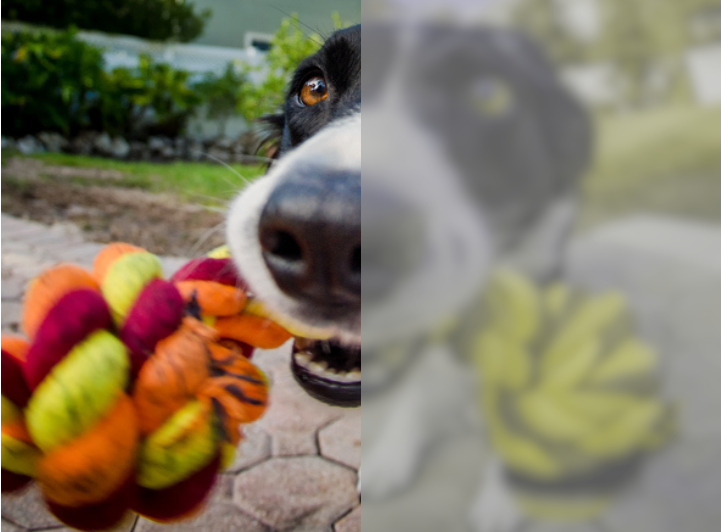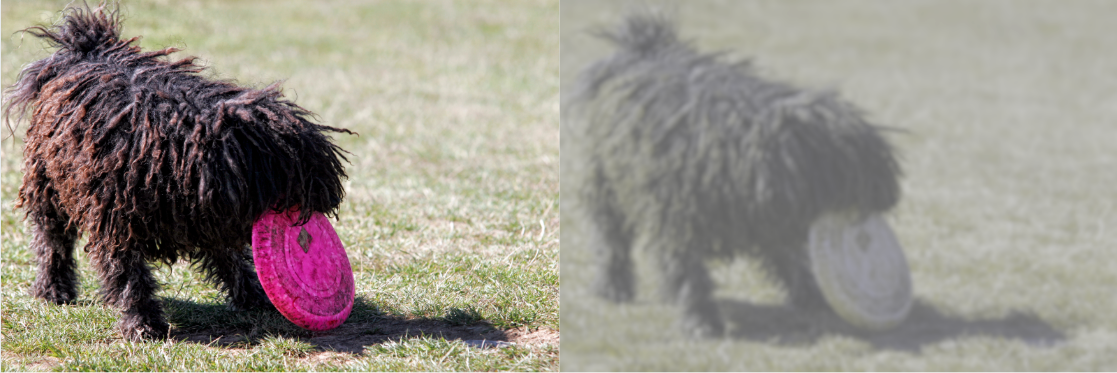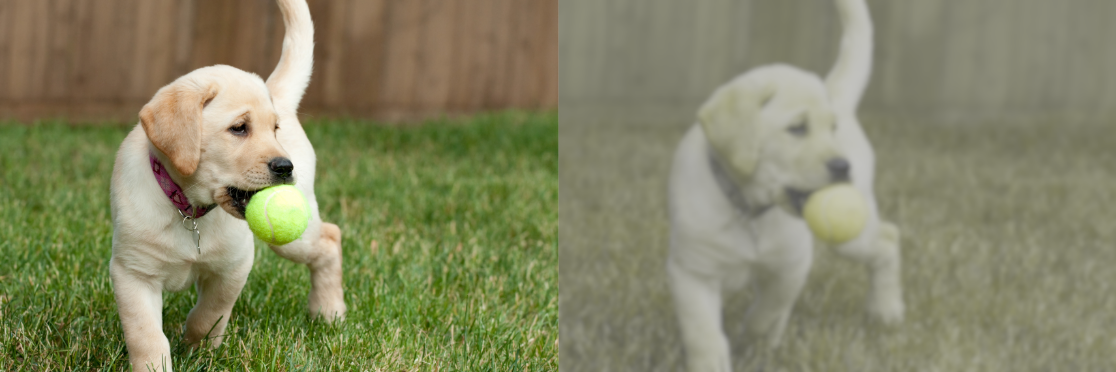
|
Is everything in a dog’s world black and white? That idea that dogs can’t see color was widely accepted for decades, but new research and conclusions about canine anatomy and behavior have shown that while dogs can’t see the same colors humans do, dogs can still see some colors.
Technicolor may be beyond their comprehension, but research shows that the dog’s eye can see much more than shades of gray.
What Is Color Blindness?
English scientist John Dalton (1766–1844) conducted some of the first studies on congenital color blindness in the late 18th century. Dalton became aware of the phenomenon because he and his brother could not recognize some colors. They confused scarlet with green and pink with blue.
In humans, the defect in red-green perception is the most common form of color deficiency. As many as 8 percent of men and 0.5 percent of women with Northern European ancestry have red-green color blindness. It is caused by abnormalities in color-detecting molecules, known as cones, in the retina. The retina is a lining at the back of the eye that converts light into electrical impulses. These signals are then conveyed, through the optic nerve, to the brain, where an image is formed.
People missing some of these color-detecting molecules (also known as photoreceptors) won’t recognize certain light wavelengths. This is what makes them color blind, although they actually can make out some hues. Red-green color-blind people can still discern yellow and blue, but items in red will appear gray or brown to them.


Myths About Dogs Seeing Colors
The notion that dogs see only in shades of black and white has been attributed to Will Judy, a lifelong dog fancier, writer, and past publisher of Dog Week magazine. He claimed to be the first to declare that dogs had poor vision and thought they were able to see single shades and tones and only general outlines and shapes.
“It’s likely that all the external world appears to them as varying highlights of black and gray,” Judy wrote in his 1937 manual, “Training the Dog.”
In the 1960s, other researchers hypothesized that the only mammals that can discern color are primates. There was little research to back up these assertions, especially the one about dogs. Nevertheless, it soon became apparent that our canine pals are color blind.
 Are Dogs Color Blind or Spectrum Challenged?
Are Dogs Color Blind or Spectrum Challenged?
In the last few decades, examinations of the canine eye structure have revealed some differences in basic design between humans and dogs. Evolution and function have driven these differences. Dogs developed their senses as nocturnal hunters, tracking and catching their food at night. Therefore, their eyes adapted to see well in the dark and to catch movement.
“For the purpose of hunting in the dark, canine eyes have a larger lens and corneal surface and a reflective membrane, known as a tapetum, that enhances night vision,” explains AKC’s chief veterinary officer, Dr. Jerry Klein. “They also have more rods, which improves low-light vision, in the retina.”
The retina is where scientists have also found the key to the difference in color perception between dogs and people. The retina is composed of millions of light-sensing cells. These include:
- Rods, which are extremely sensitive cells that catch movement and work in low light.
- Cones that work in bright light and control color perception.
Dogs have more rods than cones in their retina, whereas people have more cones, and this apparently makes the difference in color perception. Humans and a few other primate species are trichromatic, which means they have three kinds of cones. Dogs are dichromatic, and have only two types.
Each type of cone registers a different light wavelength. The one for red and green gives humans their appreciation for a red rose or a Granny Smith apple. Dogs, and some color-blind people, are missing red-green cones.
Meanwhile, there are some types of fish and birds that can see an even broader range of the color spectrum than people can. There are many types of birds and fish that are tetrachromatic — they have a fourth type of cone receptor to absorb ultraviolet light.
Dog Vision, a website devoted to canine color perception, printed this side-by-side comparison of how people and dogs register the color spectrum.
Different-Colored Dog Toys Through the Lens of a Dog



So, Can Dogs See Colors Like We Can?
Scientists now believe that a dog’s color vision is similar to that of a person who has red-green color blindness, according to research conducted by Jay Neitz, who runs the Neitz Color Vision Lab in the Department of Ophthalmology at the University of Washington.
Dogs can make out yellow and blue, and combinations of those colors. This renders a lot of the world grayish-brown. That lush green lawn? It probably looks like a field of dead hay. That bright red velvet cushion? Still comfy, but it probably comes across as a dark brown blob to the dog.
Dog Vision offers an online tool to help you see things as your dog sees them. There are also apps that you can use to see what your dog is seeing at any time.
What Does This Mean to You and Your Dog?
Now that you know that dogs don’t see certain colors, it would make sense to choose products for them that feature the colors they can see. This knowledge may help explain why some dogs go crazy over yellow tennis balls, but are apathetic about the same ball in pink or red.
When you’re throwing a ball or a bumper for your dog to retrieve in the grass or the lake, don’t choose something red, or he’s likely to lose it. And if you’re teaching him to differentiate between two toys or obedience training dumbells, it would be wise to go for one blue and one yellow.
AKC Family Dog columnist Stanley Coren offered this observation: “The most popular colors for dog toys today are red or orange. However red and orange are difficult for dogs to see. That means that when your own pet version of Lassie runs right past the toy that you tossed, she may not be stubborn or stupid. It may be your fault for choosing a toy with a color that is hard to discriminate from the green grass of your lawn.”


 Are Dogs Color Blind or Spectrum Challenged?
Are Dogs Color Blind or Spectrum Challenged?